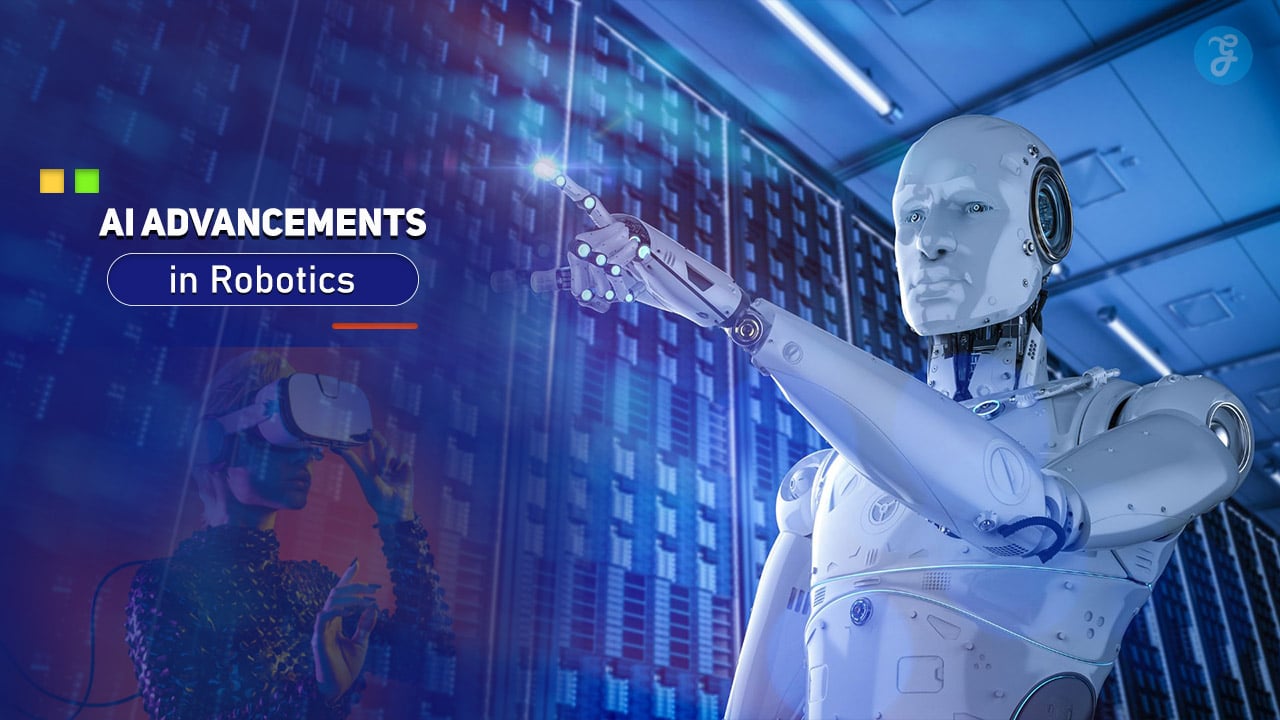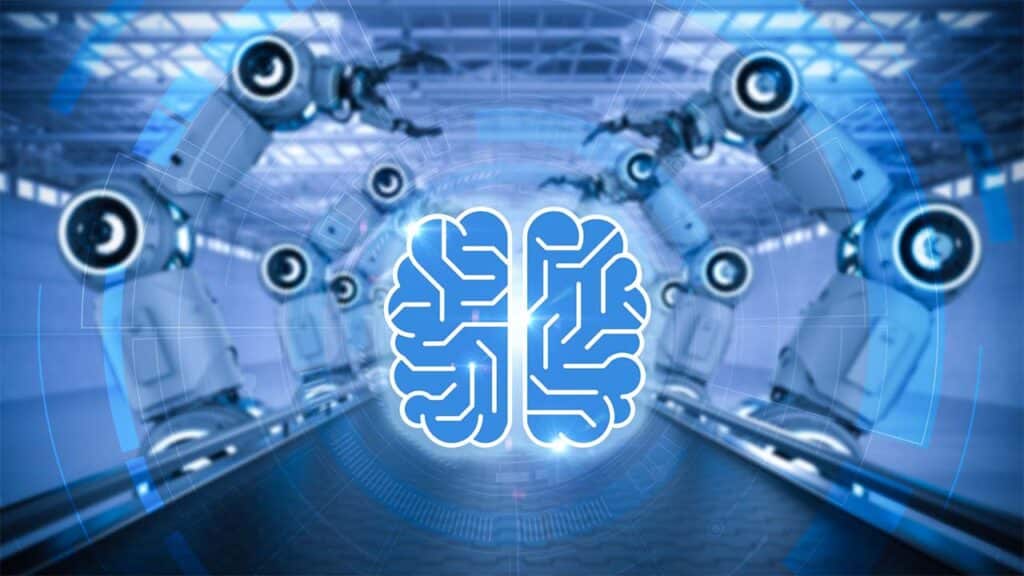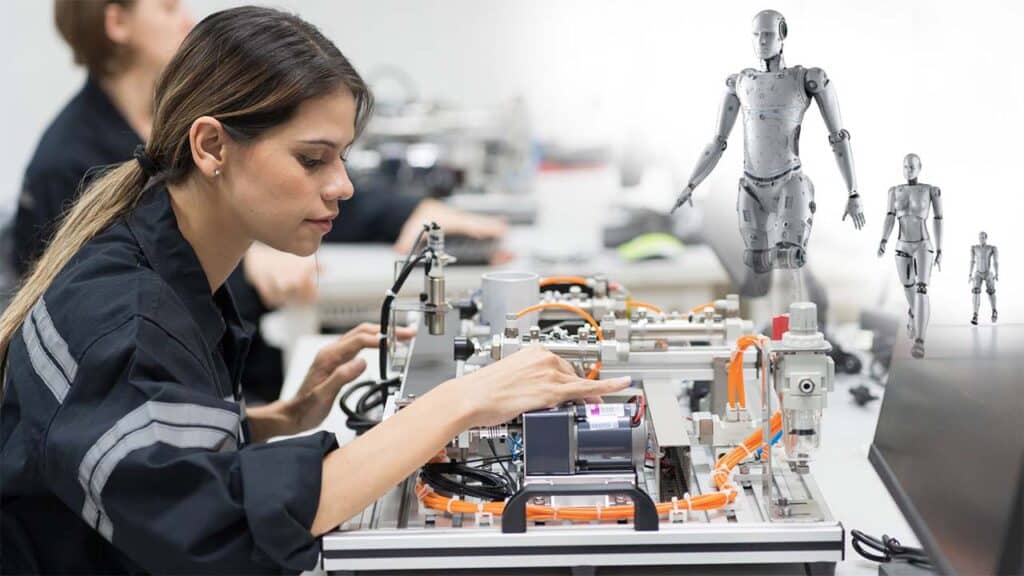Artificial Intelligence (AI) and robotics have come a long way in recent years, leading to groundbreaking innovations that are transforming industries and revolutionizing the way we live and work.
From autonomous vehicles to intelligent drones, the integration of AI in robotics has expanded the boundaries of automation, allowing machines to perform increasingly complex tasks with precision, adaptability, and intelligence.
As AI technology continues to evolve, robots are becoming smarter, more autonomous, and more capable of interacting with their environments in ways that were once thought impossible.
This detailed guide explores 15 of the most significant AI advancements in robotics, offering insights into how these innovations are enhancing robot capabilities, reshaping industries, and paving the way for a future where intelligent machines play a central role in daily life.
Why AI Advancements Are Crucial in Robotics
The combination of AI and robotics is unlocking new possibilities in automation, allowing robots to learn from their experiences, make decisions based on data, and perform tasks that require human-like adaptability.
These advancements are not only improving efficiency and productivity across various industries but also addressing critical challenges such as labor shortages, safety concerns, and the need for precision in complex operations.
From healthcare to manufacturing, AI-powered robots are making a lasting impact, transforming workflows and enabling new applications that were previously unattainable.
As AI technology becomes more sophisticated, the capabilities of robots continue to grow, making them more versatile, autonomous, and intelligent.
This symbiotic relationship between AI and robotics is leading to innovations that will shape the future of automation and redefine how machines interact with humans and their environments.
1. Machine Learning for Autonomous Robots
Machine learning (ML) is one of the most critical AI advancements in robotics, enabling robots to operate autonomously in dynamic environments.
By using algorithms that allow robots to learn from data and improve their performance over time, ML empowers robots to adapt to new situations, recognize patterns, and make decisions without human intervention.
Machine learning allows robots to solve complex problems by analyzing large datasets and recognizing trends. For example, autonomous delivery robots can use ML algorithms to navigate crowded city streets, avoid obstacles, and determine the most efficient routes based on real-time data.
This ability to learn and adapt in real-time is key to enhancing the autonomy and intelligence of modern robots.
Key Applications of Machine Learning in Robotics
Machine learning is widely used in autonomous robots, such as self-driving cars, drones, and robotic vacuums. These machines rely on ML algorithms to process sensory data, such as images, sound, and radar signals, and make split-second decisions.
In industrial settings, robots equipped with ML can detect defects in products, optimize manufacturing processes, and adjust their actions based on real-time feedback.
The integration of machine learning into robotics is transforming how robots interact with their environments, allowing for greater flexibility and more efficient performance across a wide range of industries.
2. Computer Vision in Robotics
Computer vision is another essential AI advancement in robotics, enabling robots to “see” and interpret visual information from their surroundings. By using cameras, sensors, and deep learning algorithms, robots can analyze images, recognize objects, and understand their environment in much the same way that humans do.
This enhanced perception is critical for robots performing tasks that require spatial awareness and precision.
Computer vision allows robots to identify objects, navigate complex environments, and interact with humans more naturally.
For example, warehouse robots use computer vision to scan and identify products, while autonomous drones rely on vision systems to avoid obstacles and map terrain. The ability to process and understand visual data opens up new possibilities for robots in fields such as healthcare, logistics, and manufacturing.
Applications of Computer Vision in Robotics
Robots with advanced computer vision capabilities are used in a variety of industries, from agriculture to automotive manufacturing.
In agriculture, robots equipped with computer vision can analyze crops for signs of disease, monitor growth patterns, and even pick ripe fruit with high precision.
In automotive production, computer vision helps robotic arms precisely assemble vehicles by identifying components and ensuring they are correctly positioned.
The combination of AI and computer vision is making robots more capable and adaptable, allowing them to perform complex tasks that require high levels of accuracy and decision-making.
3. Natural Language Processing for Human-Robot Interaction
Natural Language Processing (NLP) is a subset of AI that focuses on enabling machines to understand and interpret human language. In robotics, NLP plays a vital role in improving communication between humans and robots, allowing robots to respond to spoken commands, answer questions, and engage in conversations.
With advancements in NLP, robots can now process spoken language, understand context, and provide accurate responses in real-time.
This is particularly useful in service industries, where robots may assist customers, answer inquiries, or act as guides. NLP-powered robots are also becoming common in smart homes, where they respond to voice commands to control appliances, answer questions, or provide updates on tasks.
How NLP Enhances Human-Robot Interaction
Robots that integrate NLP are being used in customer service, healthcare, and education. For example, customer service robots in airports or malls can assist travelers with directions, answer common questions, and provide information in multiple languages.
In healthcare, NLP-powered robots can help patients by providing reminders about medication, assisting with rehabilitation exercises, or offering companionship through conversation.
The development of NLP technology is bridging the gap between humans and robots, making it easier for people to interact with machines in natural, intuitive ways.
4. Robotic Process Automation (RPA)
Robotic Process Automation (RPA) refers to the use of software robots to automate repetitive, rule-based tasks that typically require human intervention.
While RPA itself is not a physical robot, it represents a significant advancement in AI-driven automation, allowing businesses to streamline operations, reduce human error, and improve efficiency.
RPA is particularly useful in industries such as finance, customer service, and human resources, where repetitive tasks such as data entry, form processing, and compliance checks are common. By automating these processes, businesses can reduce costs and free up employees to focus on more strategic, creative work.
The Role of AI in Enhancing RPA
AI is taking RPA to the next level by enabling robots to handle more complex tasks that require decision-making and problem-solving.
By incorporating AI and machine learning into RPA, businesses can automate processes that involve unstructured data, such as reading and interpreting documents, analyzing customer feedback, or making recommendations based on historical data.
The combination of RPA and AI is transforming how businesses operate, enabling higher levels of automation and allowing robots to handle both simple and complex tasks with greater efficiency.
5. AI-Powered Robotics in Healthcare
One of the most promising areas for AI advancements in robotics is healthcare. AI-powered robots are revolutionizing how medical procedures are performed, how patients are cared for, and how healthcare systems operate.
From robotic surgery to AI-driven diagnostics, these advancements are improving patient outcomes, reducing human error, and making healthcare more accessible.
Robotic surgery systems, such as the da Vinci Surgical System, use AI to enhance the precision of surgeons, allowing for minimally invasive procedures that reduce recovery times and minimize complications.
AI-powered robots are also being used in hospitals to assist with tasks such as medication delivery, patient monitoring, and sanitation.
AI in Diagnostics and Personalized Treatment
AI-powered robots are playing a crucial role in diagnostics by analyzing medical data, such as imaging scans or lab results, to detect patterns and make accurate diagnoses.
These robots can analyze large datasets much faster than humans, helping doctors identify conditions early and recommend personalized treatment plans.
In the future, AI-driven robots may also assist with physical rehabilitation, providing personalized exercise routines and tracking patient progress in real time.
By integrating AI with robotics, the healthcare industry is moving toward more precise, efficient, and personalized care.
6. Swarm Robotics
Swarm robotics is an emerging field that involves the use of multiple robots working together to achieve a common goal. Swarm robots cooperate and communicate with one another to carry out tasks that would be impossible for a single robot to complete, taking their cue from the behavior of insects like ants or bees.
AI algorithms that direct these systems allow the robots to plan their actions, distribute tasks, and adapt to changes in their environment.
Swarm robotics has applications in fields such as agriculture, search and rescue, and military operations. For example, a swarm of drones can be used to survey large agricultural fields, monitor crop health, and even plant seeds.
In disaster recovery, swarm robots can search for survivors in hazardous environments, covering more ground and increasing the chances of a successful rescue.
The Benefits of AI in Swarm Robotics
AI plays a critical role in enabling swarm robots to communicate, learn, and coordinate effectively. By using machine learning and AI-driven decision-making, swarm robots can distribute tasks among themselves, avoid collisions, and adjust their behavior in real-time based on changing conditions.
This flexibility makes swarm robotics a powerful tool for complex, large-scale tasks that require teamwork and adaptability.
The development of AI in swarm robotics is unlocking new possibilities for automation, allowing robots to work together in ways that mimic natural systems and tackle challenges that are beyond the reach of individual machines.
7. Robots with Emotional Intelligence
Emotional intelligence (EI) in robots is one of the most exciting AI advancements in the field of robotics. By incorporating emotional intelligence, robots can understand, interpret, and respond to human emotions, allowing for more empathetic and meaningful interactions.
Robots with emotional intelligence can detect facial expressions, voice tones, and body language, making them better equipped to assist in situations where human emotions play a critical role, such as healthcare or customer service.
For example, robots in healthcare settings can use emotional intelligence to comfort patients, monitor emotional well-being, and provide companionship to elderly or isolated individuals. In customer service, emotionally intelligent robots can better understand and respond to customer frustrations, offering more personalized and empathetic assistance.
Applications of Emotional Intelligence in Robotics
Emotional intelligence is being used in robots designed for elderly care, where companionship and empathy are essential for improving the quality of life for seniors. These robots can engage in conversations, recognize when a person is feeling sad or anxious, and offer comfort through verbal communication or physical gestures.
Similarly, robots with EI are being deployed in schools to help children with special needs, recognizing emotional cues and providing tailored support.
As emotional intelligence technology advances, robots will become more adept at understanding and interacting with humans in emotionally complex situations, improving the quality of human-robot interactions across a wide range of applications.
8. AI in Industrial Robotics
Industrial robotics is one of the earliest adopters of AI, with robots playing a central role in automating manufacturing processes. AI-powered industrial robots are transforming industries such as automotive, electronics, and aerospace by improving efficiency, precision, and flexibility.
These robots can perform tasks such as welding, assembly, and quality control with speed and accuracy that surpasses human capabilities.
AI allows industrial robots to adapt to changing production needs, optimize workflows, and learn from their operations to improve performance over time.
For example, in a car manufacturing plant, AI-powered robots can assemble vehicles with precision, detect defects, and adjust their actions based on real-time data, ensuring consistent quality and reducing waste.
AI-Powered Automation in Smart Factories
The concept of “smart factories” is becoming a reality thanks to AI-powered industrial robots. In a smart factory, robots can communicate with one another and with the broader production system to optimize workflows, reduce downtime, and improve overall efficiency.
These factories leverage AI for predictive maintenance, ensuring that robots are serviced before breakdowns occur, which reduces costly interruptions to production.
The integration of AI into industrial robotics is driving the future of manufacturing, enabling greater automation, flexibility, and efficiency across industries.
9. AI-Driven Drones
AI advancements are taking drone technology to new heights by improving their autonomy, navigation, and decision-making capabilities. AI-driven drones can perform a wide range of tasks, from aerial photography and mapping to search and rescue missions and package delivery.
By using AI algorithms to analyze data from cameras, sensors, and GPS systems, drones can navigate complex environments, avoid obstacles, and make real-time decisions about their flight paths.
One of the most significant AI advancements in drone technology is the ability for drones to operate autonomously without human intervention. This has opened up new possibilities for industries such as agriculture, logistics, and public safety.
Applications of AI-Driven Drones
AI-powered drones are being used in agriculture to monitor crop health, analyze soil conditions, and optimize irrigation. In logistics, companies like Amazon and UPS are exploring the use of drones for last-mile delivery, where AI-driven drones can deliver packages quickly and efficiently, even in congested urban areas.
The combination of AI and drone technology is revolutionizing industries by providing faster, more efficient solutions to complex challenges, making drones an essential tool in modern automation.
10. AI for Collaborative Robots (Cobots)
Collaborative robots, or cobots, are designed to work alongside humans in shared workspaces. Unlike traditional industrial robots that operate in isolation, cobots are equipped with AI and sensors that allow them to safely interact with humans, making them ideal for tasks that require a combination of human creativity and robotic precision.
Cobots are being used in industries such as manufacturing, logistics, and healthcare, where they assist workers with tasks such as assembly, packaging, and patient care.
AI advancements in cobots have made them more intuitive and adaptable, allowing them to learn from their human counterparts and improve their performance over time. Cobots can be programmed to take over repetitive tasks, freeing up human workers to focus on more complex and creative aspects of their jobs.
The Role of AI in Improving Cobot Capabilities
AI-powered cobots are becoming more versatile and intelligent, with the ability to understand human gestures, voice commands, and even anticipate the needs of their human collaborators.
This makes cobots ideal for industries that require precision and safety, such as healthcare, where cobots can assist with surgeries or provide physical therapy to patients.
As AI technology continues to evolve, cobots are expected to play an increasingly important role in industries that require human-robot collaboration, providing both efficiency and safety in shared work environments.
11. Deep Learning for Enhanced Robot Perception
Deep learning, a subset of machine learning, has significantly advanced robot perception by enabling machines to process and understand sensory data in ways that were previously impossible.
Through deep neural networks, robots can analyze complex data from cameras, microphones, and other sensors to “see,” “hear,” and “understand” their surroundings more effectively.
Deep learning allows robots to improve their decision-making abilities by recognizing patterns, detecting anomalies, and predicting outcomes based on historical data.
For example, deep learning algorithms can enable robots to recognize objects in cluttered environments, making them more efficient at tasks such as sorting, picking, and navigating.
Applications of Deep Learning in Robotics
Deep learning is being used in a variety of robotic applications, including autonomous vehicles, where it helps robots analyze data from sensors such as LiDAR and cameras to navigate roads safely.
It is also used in healthcare, where AI-powered robots can analyze medical images to assist with diagnoses.
As deep learning technology advances, robots will continue to become more perceptive and capable of handling complex tasks that require high levels of sensory processing and understanding.
12. Robots for Search and Rescue Missions
Search and rescue missions are often time-sensitive and dangerous, making them ideal applications for AI-powered robots. Equipped with AI algorithms and advanced sensors, search and rescue robots can navigate hazardous environments, locate survivors, and provide real-time data to human responders.
These robots are used in a variety of scenarios, including natural disasters, building collapses, and war zones.
AI enables search and rescue robots to make real-time decisions based on environmental data, allowing them to avoid obstacles, navigate rubble, and identify signs of life.
This technology is saving lives by increasing the speed and efficiency of search and rescue efforts while reducing the risks to human responders.
How AI Is Enhancing Search and Rescue Capabilities
AI-driven search and rescue robots are being deployed in situations where human responders cannot easily reach, such as collapsed buildings or toxic environments.
These robots are equipped with cameras, sensors, and communication systems that allow them to relay information back to rescue teams. Some robots are even designed to carry medical supplies or provide assistance to survivors until human responders arrive.
By incorporating AI into search and rescue missions, robots are becoming valuable tools for saving lives in disaster scenarios, making rescue operations more efficient and effective.
13. Self-Learning Algorithms for Autonomous Vehicles
Autonomous vehicles are one of the most high-profile applications of AI advancements in robotics. Self-driving cars, trucks, and drones use AI to navigate roads, avoid obstacles, and make real-time decisions based on data from their surroundings.
One of the most exciting developments in autonomous vehicles is the use of self-learning algorithms, which allow vehicles to improve their performance over time by learning from their experiences on the road.
Self-learning algorithms enable autonomous vehicles to handle complex driving situations, such as navigating through traffic, responding to changing weather conditions, and interpreting road signs.
These advancements are making autonomous vehicles safer, more reliable, and more capable of operating in a wide range of environments.
AI and the Future of Autonomous Transportation
Self-learning algorithms are paving the way for fully autonomous transportation systems, where vehicles can operate without human intervention.
In addition to self-driving cars, autonomous trucks are being developed to transport goods more efficiently, while AI-powered delivery drones are being tested for last-mile deliveries.
As AI technology continues to evolve, self-learning algorithms will play a crucial role in the future of transportation, making autonomous vehicles safer and more capable of handling the complexities of real-world driving.
14. Robotic Exoskeletons and AI Integration
Robotic exoskeletons are wearable devices that enhance human strength, mobility, and endurance. These devices are used in industries such as construction, healthcare, and military operations to assist workers and patients with physically demanding tasks.
AI integration in robotic exoskeletons is enabling these devices to become more adaptive, responsive, and personalized to the wearer’s movements.
AI-powered exoskeletons can learn from the wearer’s movements and adjust their support based on the individual’s needs. For example, in healthcare, exoskeletons are being used to help patients with mobility impairments regain the ability to walk.
In industrial settings, exoskeletons can reduce the strain on workers’ bodies, allowing them to lift heavy objects with ease and work for longer periods without fatigue.
How AI Is Revolutionizing Robotic Exoskeletons
The integration of AI into robotic exoskeletons allows these devices to learn from the wearer’s actions and adapt to different environments.
For example, AI-powered exoskeletons can detect changes in terrain and adjust their support to help the wearer maintain balance. They can also monitor the wearer’s physical condition and provide real-time feedback on posture and movement to prevent injuries.
As AI technology advances, robotic exoskeletons will become more intelligent and capable of assisting people in a wide range of tasks, from rehabilitation to heavy lifting, enhancing both human performance and quality of life.
15. AI in Agricultural Robotics
Agriculture is undergoing a transformation thanks to the integration of AI-powered robotics. These robots are being used to automate a variety of tasks, from planting and harvesting crops to monitoring soil health and managing irrigation systems.
By using AI to analyze data from sensors and cameras, agricultural robots can make real-time decisions that optimize crop yield, reduce waste, and improve sustainability.
AI advancements in agricultural robotics are helping farmers increase productivity while reducing the environmental impact of farming. For example, robots equipped with AI can detect pests, diseases, and nutritional deficiencies in crops, allowing farmers to take targeted action and minimize the use of chemicals.
Applications of AI-Driven Robots in Agriculture
AI-powered robots are being used for tasks such as precision planting, automated weeding, and crop monitoring. These robots use AI algorithms to analyze data from drones and ground sensors, helping farmers optimize irrigation, fertilizer application, and pest control.
Additionally, AI-driven robots can autonomously harvest crops, reducing labor costs and increasing efficiency.
The integration of AI into agricultural robotics is revolutionizing how food is grown, harvested, and managed, making farming more efficient and sustainable for the future.
Conclusion
The fusion of AI and robotics is revolutionizing the way machines interact with the world, making robots more intelligent, autonomous, and capable than ever before.
These 15 AI advancements in robotics are shaping the future of industries such as healthcare, agriculture, manufacturing, and transportation, offering new opportunities for automation and improving human-robot collaboration.
As AI technology continues to evolve, robots will become even more integral to our lives, enhancing productivity, safety, and quality of life in ways we are just beginning to imagine.
By staying informed about these developments and exploring how they can be applied to different sectors, businesses and individuals alike can harness the power of AI-powered robots to drive innovation and shape the future of automation.








































